‘It’s blazing hot in the summer and freezing cold in the winter. We get about a quarter of the rain Scotland does, and it’s very flat, like Kansas flat.’ Says, Scott Durbin, founder and owner of Café Béton as he explains the differences between life in Edinburgh and his native Chicago.
Having spent most of my life in Scotland I can attest to its almost arctic-like conditions. As beautiful as this country is, it is not blessed with glorious weather. But, of course, we aren’t here to discuss our dubious climate.
‘We make sleek, modern concrete home goods with an eco-minded approach.I would say our ethos is to challenge perceptions and inspire our customers to do the same. We have a slogan, ‘Reinvent your coffee ritual’, that I believe captures the essence of what we’re trying to achieve.”
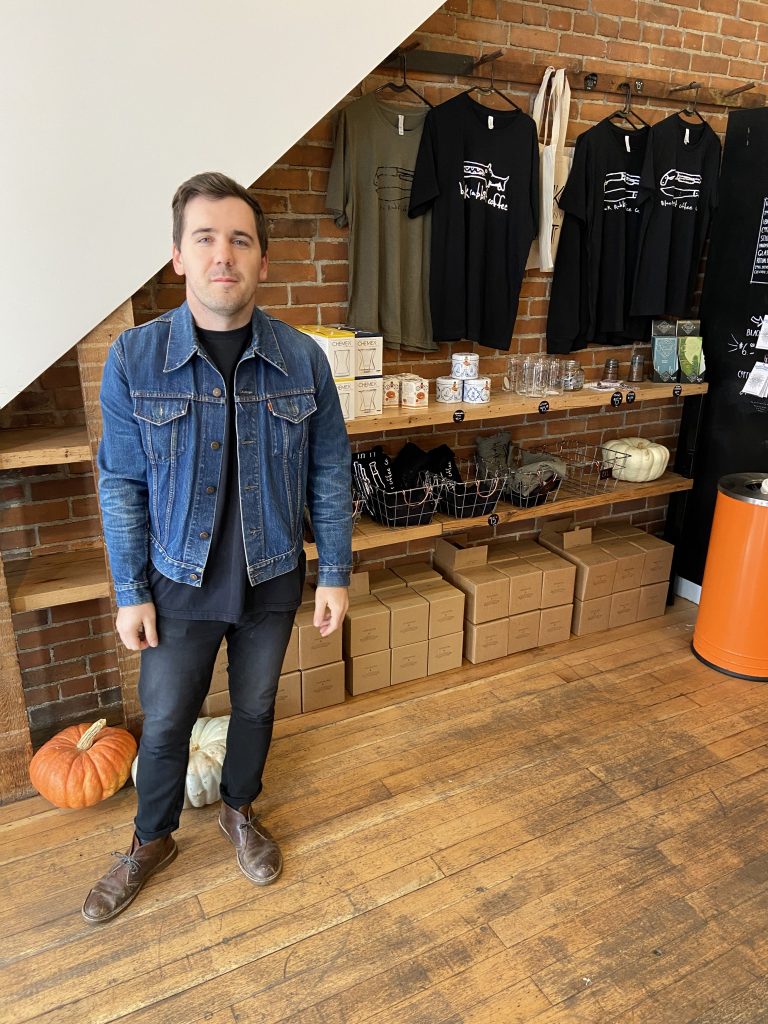
A lot of what Café Béton is doing, hasn’t been done before, and there will always be some initial hesitation to the unknown, but as Scott explains, ‘pushing boundaries, whether its material, process or anything in-between, is what keeps us moving forward.’
For Café Béton, the opportunities are endless. They are driving material innovation and sustainability to their limits to try and create something new and exciting. In my opinion, you will be hard-pushed to find something that compares to the business that Scott is building in terms of quality and dedication to innovation and sustainability.
So, how does one come from the Windy City to the even Windier City? As we sit in the surroundings of Throat Punch Coffee, with the rain pouring poetically down the window, Scott tells us his story.
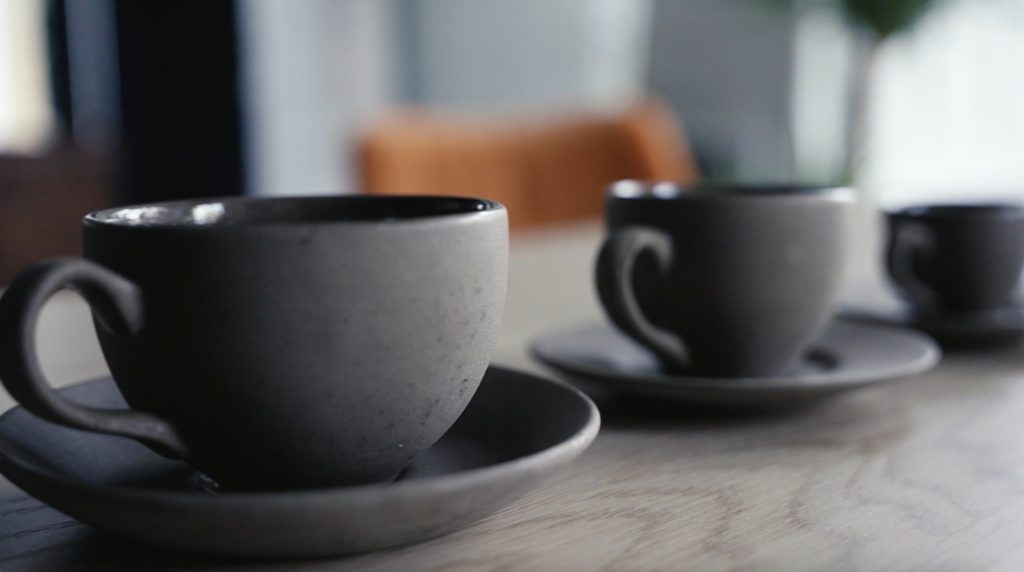
I FELL IN LOVE WITH THE CITY
So how did I end up in Edinburgh? Well, I studied and received my undergraduate degree in Graphic Design in the US (a town near St. Louis), and eventually moved to St. Louis to work in the industry. After a few years of cutting my teeth as a designer, I realised that I was just a bit burnt out and looking for something new.
I knew I wanted to return to University, but I wanted it to be as much about personal growth as it was about education. So, after spending a few months researching (and almost moving to Australia, I had a working holiday visa and was looking at Darwin), I landed on the UK, and in particular Edinburgh and Napier University. I fell in love with the city, and Napier’s programme excited me, as they were big on sustainability and pushing boundaries and innovation. So I packed up everything I owned in two suitcases and off I went.
IT REALLY INSTALLED A STRONG WORK ETHIC IN ME
Life in the States isn’t too vastly different from how we’re living now, albeit the obvious cultural differences. We lived in a smaller town kind of halfway between Chicago and St. Louis, and I come from an agricultural family. I always had workshop spaces around me and there was always something needing done or worked on.
I think I was operating farming equipment by about the age of 10 or 12. But I’m so thankful for how I grew up. It really instilled a strong work ethic, and I was able to transfer those skills and that attitude to my programme at uni and eventually the business.
I will say one fun fact about growing up in the US is just our gauge of distance. Growing up, we took driving holidays all across the States, so what we considered a long distance was comparatively much larger than here in Scotland. For example, it would take us over 4 hours North or South to even be out of Illinois, or around 2 hours East or West. From Edinburgh, I can be at the North Coast in about 5 hours, so it has really made discovering Scotland so much fun and almost more doable if that makes sense.
I KNEW I WANTED TO MAKE A BIG STATEMENT PIECE
I arrived in Scotland with two suitcases, booked an Airbnb booked for a couple of weeks, and then moved into a student flat. I really got stuck into life at Napier Uni and just immersed myself in the culture in any way I could. Once the academic research phase of our programme had finished, we set out to work on our major projects, I quite literally lived in the workshop.
I was there almost every day 9-5, pouring and experimenting with concrete. Again just putting that work ethic I grew up with to good use. I got to know the staff really well, and they were great in helping me get any and all resources I needed.
I knew I wanted to do a big statement piece for my major project with all the sustainable concrete research I had done. So along came the crazy idea of casting a bathtub! I think I settled on a bathtub because I wanted something almost mundane, an object we’re so used to seeing in one specific way, in a material that it immediately challenges perceptions.
I spent a couple of weeks designing the moulds, I was even put in contact with the Engineering Dept. at Napier who were able to review my schematics and eventually get me access to a larger commercial-scale concrete mixer. And we went for it.
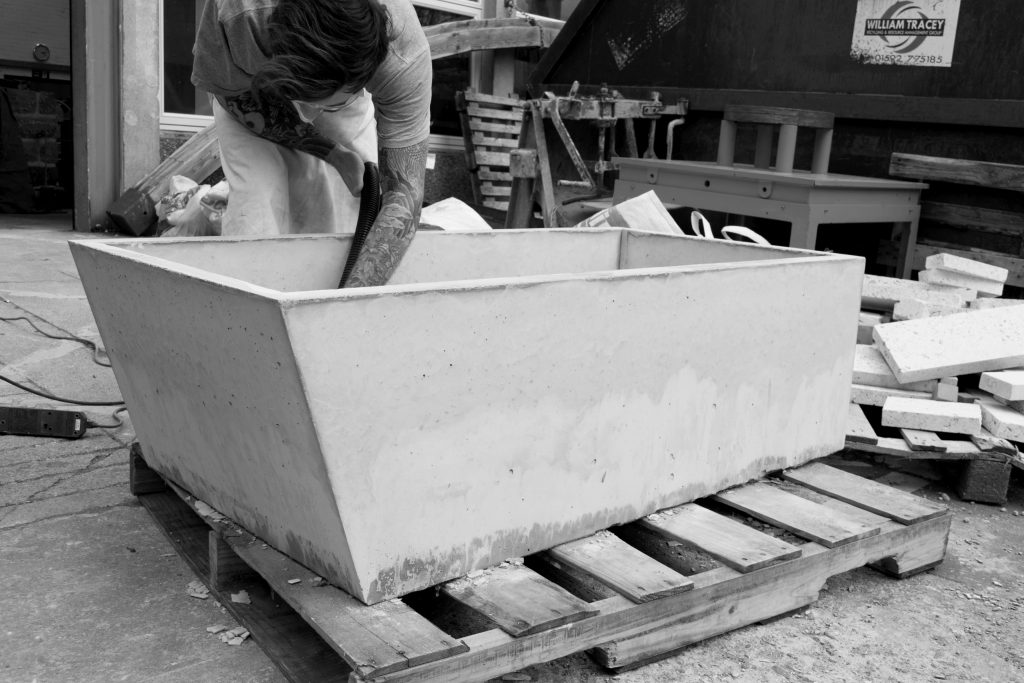
Tying in with the sustainability piece, we used a reclaimed partial cement replacer, and I headed to Portobello and the neighbouring beaches with a rucksack full of bin bags. After about a day or so, I had around 3 or 4 bin bags full of washed-up plastic: tubs, bottles, and everything in between. It was amazing some of the things that washed up. I mostly looked for HDPE and LDPE plastics, which are a bit denser and would work better as a concrete aggregate. The goal was to have a light, almost white concrete with speckled plastic aggregate showing. Fast forward to the pouring day, it went well, and the tub worked!
The main issue became that the cast was a bit over-engineered. I made the walls too thick, so the tub weighed around 200kg. We were able to get the tub rolled into the gallery for the exhibition, and it was a hit. I had plans to try and sell it, but with the weight, it was, I knew it wouldn’t function as a usable tub unless it was in a ground-floor flat. But at that point, the cost and logistics of shipping would be prohibitive. I was set to take it to the back of the building and break it down with a sledgehammer when one of my programme directors came round and said they had chatted around the University and had found a home for it.
Next to the library at the Merchiston campus, there is a small secluded garden area that a group had been cleaning up and planning to make into a nice usable outdoor area. So the tub found its home as a sculptural piece within the garden. To the last of my knowledge, the tub was still resting peacefully there.
I WANTED TO CREATE A PRODUCT THAT ADDRESSED SUSTAINABILITY
Café Béton was born out of my University research thesis for my degree. I was majoring in Product Design, and I had kicked around different ideas for major projects, from compact bikes to modular home designs, before settling on concrete.
Growing up around the trades, it was a material that always fascinated me, the kind of metamorphosis that it undergoes — this almost liquid, grey slurry to a hard, stonelike surface purely from adding time and water — it really just intrigued me and raised more questions than answers.
I started asking myself what can I do with this material, and how can I apply its advantages in new and unique ways. I knew from the beginning I wanted to create a product that addressed sustainability and Concrete was the perfect vehicle for this exploration.
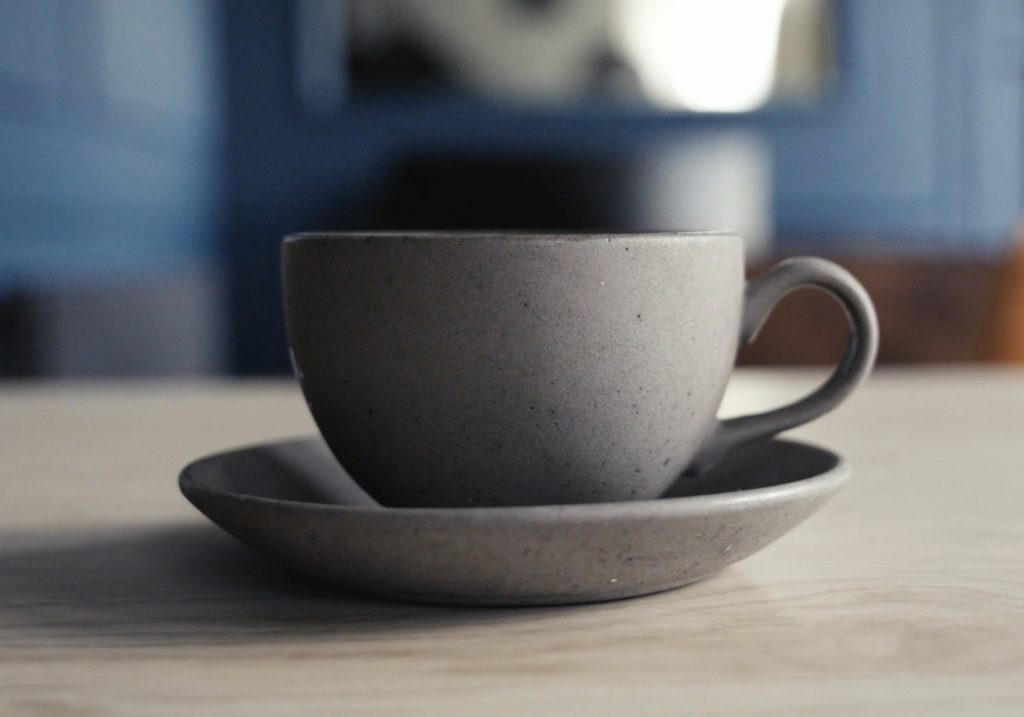
The idea to focus on coffee cups, or drinkware and small home goods, again stemmed from a passion of mine. I was always interested in the coffee industry and the rich history and inherited knowledge there is within. So really the questions came up quite naturally: Is it possible to make a concrete coffee cup? Would concrete coffee cups function well? Would they be better than ceramic? Would they look good?
At this point, I didn’t know if the products would be successful, much less have people interested in them. Fast forward to my degree show, I was awarded Best in Show and had people asking me where and when they could purchase some, and there was even interest from some interior design businesses.
THE FRENCH LOVE OF COFFEE
As I wrapped up my degree, my partner and eventual wife Chloe had a year left to study abroad in France. I took that opportunity (and a workshop in the mountains of France) to move with her and to continue to develop my product, and it was really there that I was immersed in the French love of coffee, and how it’s a much more visceral process.
The culture revolves around quality over quantity; small coffees, but rich, complex, and dedicating time in the day for those experiences. My aim was to create high-quality, unique products that encourage people (here in the UK and the US) to slow down and reinvent these everyday rituals. That’s why when we finally settled on a name for the business, I went with the French-inspired Café Béton, which literally translates to ‘Concrete Cafe’, paying homage to the culture that inspired me to continue to grow the business.
EACH CUP IS UNIQUE
For starters, to the best of our knowledge, there isn’t a product like this out there anywhere that we could find; 100% real concrete drinkware that isn’t a type of ceramic, stoneware, or clay-based product. While that wasn’t our motivation in the beginning, it became a unique motivator, almost to prove to ourselves that it could be done effectively.
For me personally, the most unique aspect of our products is what happens when people use them. There’s a tactility that’s hard to describe, but it’s something that all of our initial user bases have agreed upon.
I liken it to a well-worn concrete or stone surface, smooth yet tactile. It’s something that I haven’t found anywhere else even with raw or uncoated ceramics. And just as a concrete or stone surface wears over time, the exterior of all of our products are treated in such a way that natural high-use points — the handle, the rim where you drink from most frequently, if you clasp with two hands or hold by the rim — those spots will naturally darken, smooth, and patina more over time. This ageing process makes a cup unique to each person, and each scar, mark, or stain tells a story. There are also some thermal properties with concrete that make it insulate well and outperform standard ceramics in some of our designs, although there isn’t a massive difference in performance.
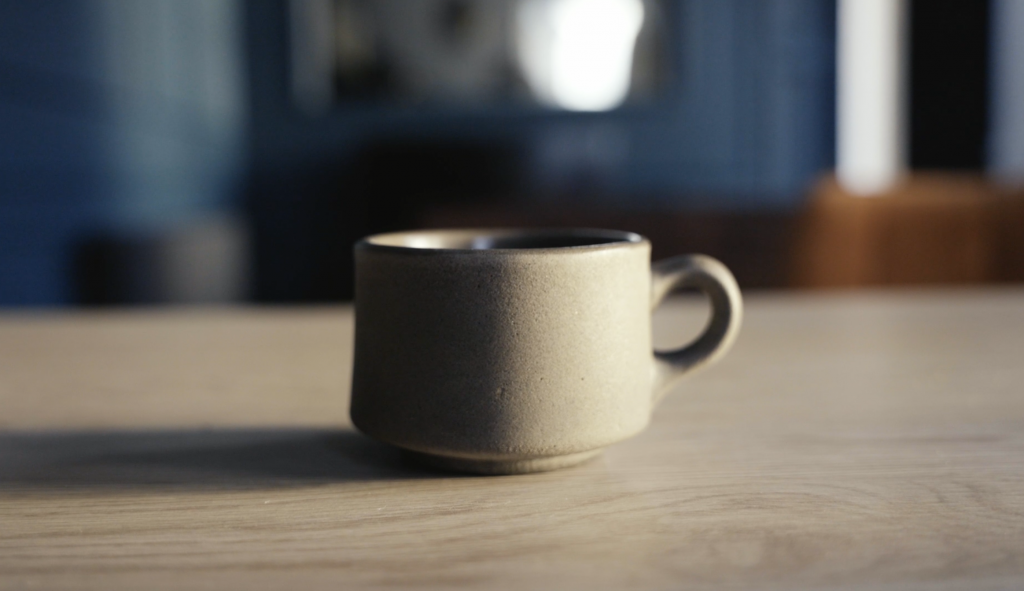
As a side note, we have a reclamation process where if anyone accidentally breaks their cup or mug, all they have to do is send it back to us, they receive money off their next order, and we reclaim that concrete and break it down to be used in their new mug. It creates an incentive for a more sustainable, circular product lifecycle and an interesting relationship between product and user.
I mean we all have that favourite mug, the one that we’d be absolutely gutted about if it gets dropped and breaks. But how cool is it to be able to have that cup ‘reborn’ in a sense? Like other industries such as fashion, I think it promotes more mindful purchasing and investing in quality objects that become valued possessions. Essentially these cups could become an heirloom item, it ages with the person, becoming a treasured part of their collection and daily rituals.
THE IMPORTANCE OF SUSTAINABILITY
For us, it’s crucial. I knew from the beginning that when I started researching what would eventually become Café Béton, I wanted to build a product and a business that addressed sustainability as entirely as possible.
While my initial inspiration was to move past the commercial applications and challenge what could be done with concrete, it made sense to address the sustainability issues uncovered while testing and researching. I think this is particularly relevant with a material like concrete, which permeates so many facets of our everyday interactions and is a material that initially is not the greenest product.
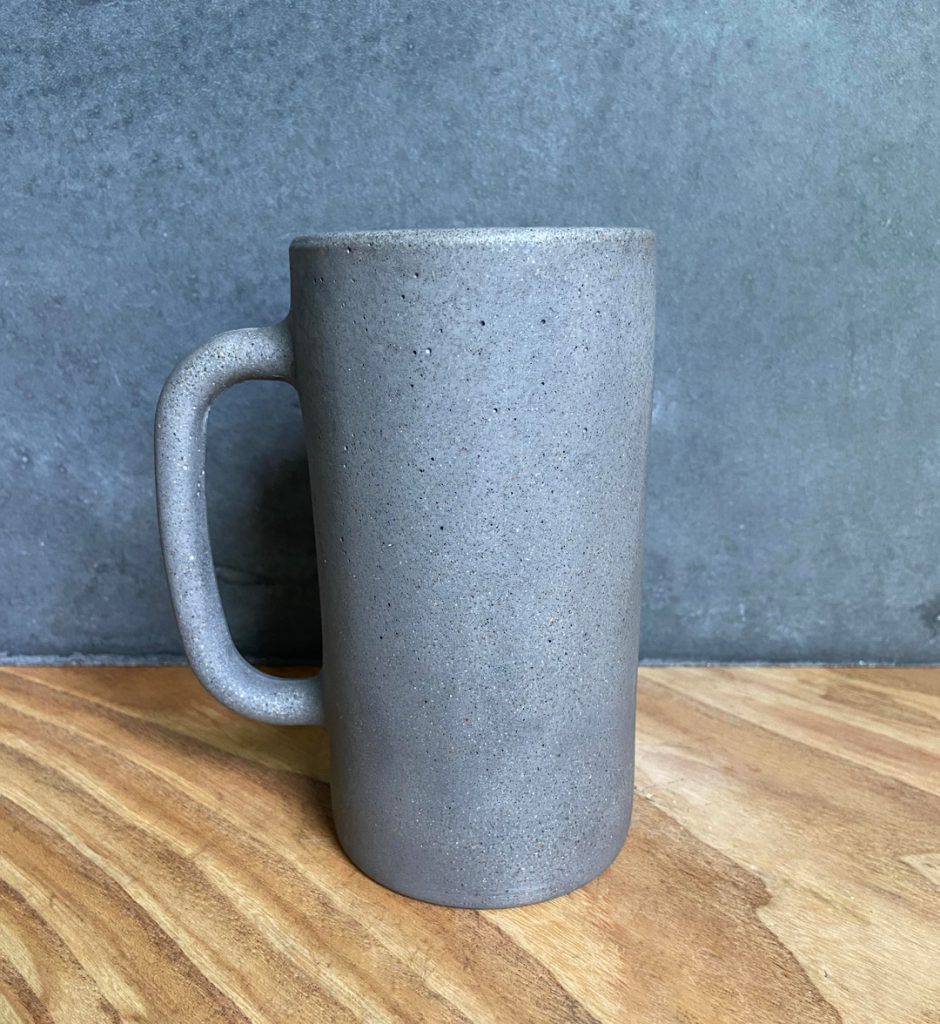
It is fascinating the amount of research and sustainable developments that are being made in the concrete industry, and I hope that in our small way, we can add to that knowledge base and if anything, with a more consumer-facing product like ours, bring more mainstream awareness to these initiatives. So I would say from the beginning that a key piece of our business has always been about sustainability, from processes to material innovation.
—
Thank you very much to the gentleman that is Scott Durbin for his time. To learn more about Café Béton, please visit them here or follow them on Instagram
